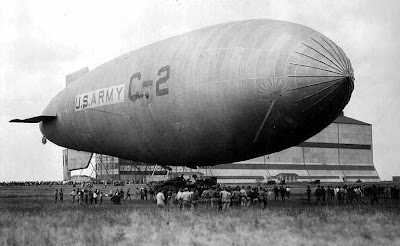(AP) History buffs will gather this week near the New Jersey coast to commemorate a major airship disaster.
No, not that one.
Newsreel footage and radio announcer Herbert Morrison's plaintive cry, "Oh, the humanity!" made the 1937 explosion of the Hindenburg at the Lakehurst Naval Air Station probably the best-known crash of an airship.
But just four years earlier, a U.S. Navy airship seemingly jinxed from the start and later celebrated in song crashed only about 40 miles away, claiming more than twice as many lives.
The USS Akron, a 785-foot dirigible, was in its third year of flight when a violent storm sent it plunging tail-first into the Atlantic Ocean shortly after midnight on April 4, 1933. Continued



























